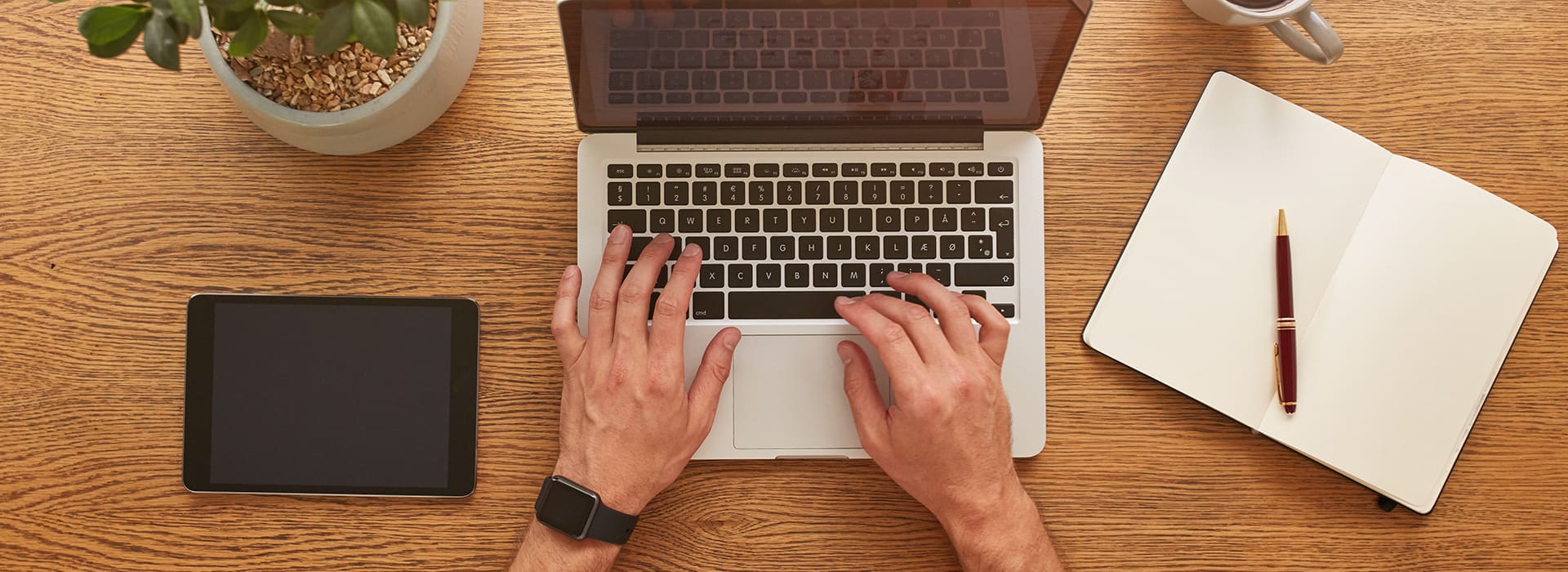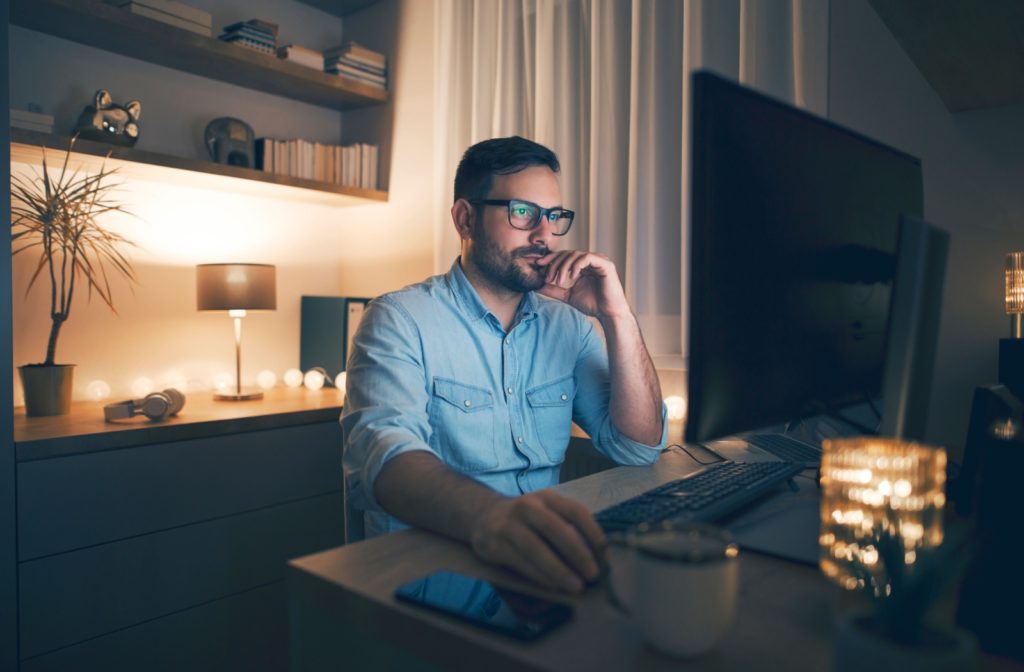LED lights surround us all day, from the screens of our smartphones to the ceiling lights in our homes. And with their growing use, many people are concerned about their impact on eye health. Much of this conversation comes down to blue light.
Whether LED lights and blue light are bad for your eyes is still unclear, though we do know they can affect your sleep and lead to digital eye strain. LED lights might not be going anywhere, but you can take steps to help your eyes avoid the worst of it.
What Are LEDs?
LED stands for Light Emitting Diode. Unlike traditional incandescent bulbs that use a filament to produce light, LEDs emit light when an electric current passes through a microchip. This makes LED lights more energy-efficient and longer-lasting.
The primary concern about LED lights and eye health is their emission of blue light.
The Eyes & Blue Light
When you look at your screen or sit under LED lighting, your eyes are exposed to high-energy visible (HEV) blue light. This light has shorter wavelengths and higher energy compared to other colours in the visible spectrum. LED lights aren’t the only source of blue light. In fact, the sun is possibly the main source of blue light we experience.
There is some evidence that our eyes aren’t very good at blocking blue light. At least animal studies have shown how overexposure to blue light can penetrate deep into the eyes and potentially damage retinal cells. This damage could increase the risk of eye conditions such as macular degeneration and cataracts.
Human research on the connection between blue light and eye damage is still ongoing—but many doctors are warning people to be cautious about screen time as research on the damaging effect of blue light continues.
LED Lights & Your Sleep
Your circadian rhythm, the body’s natural sleep-wake cycle, is influenced by light. The blue light from the sun inhibits melatonin production. Melatonin is a hormone that tells our body it’s time to go to sleep, which means that when we’re exposed to the blue light from digital screens, our body thinks it’s still daytime.
Poor sleep quality is about more than simply being tired during the day. It can seriously impact your health, increasing your risk of:
- Obesity
- Depression
- Diabetes
- Heart disease
To improve your sleep quality, consider these tips:
- Avoid screen use at least an hour before bedtime
- Use dim, warm lights in the evening
- Invest in blue light-blocking glasses if you must use screens before bed

What is Digital Eye Strain?
Digital eye strain, or computer vision syndrome, refers to a group of eye and vision-related issues resulting from prolonged use of digital screens. They’re hard to avoid—you’re using one right now, in fact! So whether it’s your computer, smartphone, tablet, or television, spending long hours focusing on these screens can significantly strain your eyes.
Symptoms of digital eye strain can include:
- Blurred vision
- Dry eyes
- Headaches
- Neck and shoulder pain
- Eye fatigue
These symptoms could worsen if you have an outdated prescription or an unmanaged vision problem. The good news is your optometrist can diagnose digital eye strain and help you find relief.
Managing Digital Eye Strain & Blue Light
Now that we know the potential risks, what can you do to manage your time on digital screens? While anybody who spends long periods at a screen, whether it be for work or play, is at risk of digital eye strain—it’s not inevitable. It takes a bit of consideration, but a few changes to your workspace and habits go a long way in raising your quality of life.
Here are some recommendations we can make:
- Take breaks: Follow the 20-20-20 rule—every 20 minutes, take a 20-second break and focus on something 20 feet away to reduce eye strain.
- Stay hydrated: Keeping your body well-hydrated can help prevent dry eyes.
- Adjust your screen settings: Reduce eye strain by modifying your screen’s blue light filter and brightness.
- Optimize your workspace: Position your screen at a comfortable distance, ideally arm’s length, and ensure the surrounding light complements your screen’s brightness.
- Blink frequently: People blink less while focusing on screens. Make a conscious effort to blink to keep your eyes hydrated.
- Use computer glasses: Consider computer glasses to filter out harmful light from screens. Consult your optometrist for personalized recommendations.
See the Light with Digital Eye Strain Solutions
While LED lights and blue light exposure are part of our modern lives, managing them wisely is important to protect your eye health. By taking simple steps to reduce blue light exposure, you can minimize the risk of digital eye strain and improve your sleep quality.
If you’re experiencing symptoms of digital eye strain or have concerns about blue light exposure, don’t hesitate to book an appointment with us. Our friendly Discover Eyecare team is here to help you keep your eyes healthy and comfortable.



